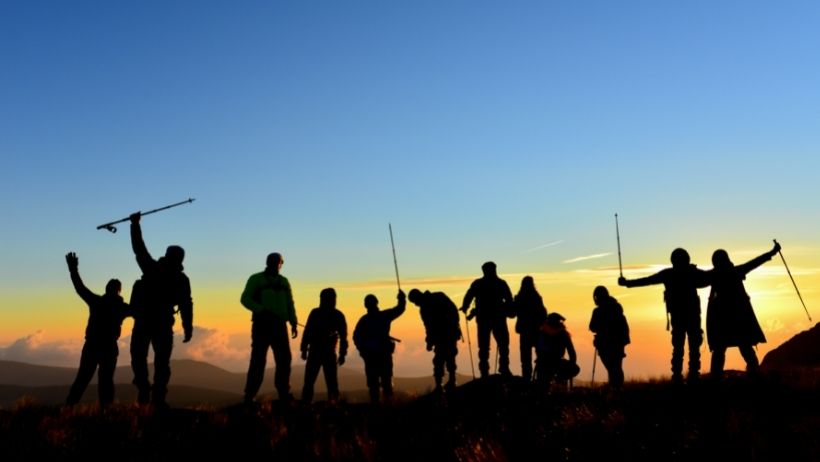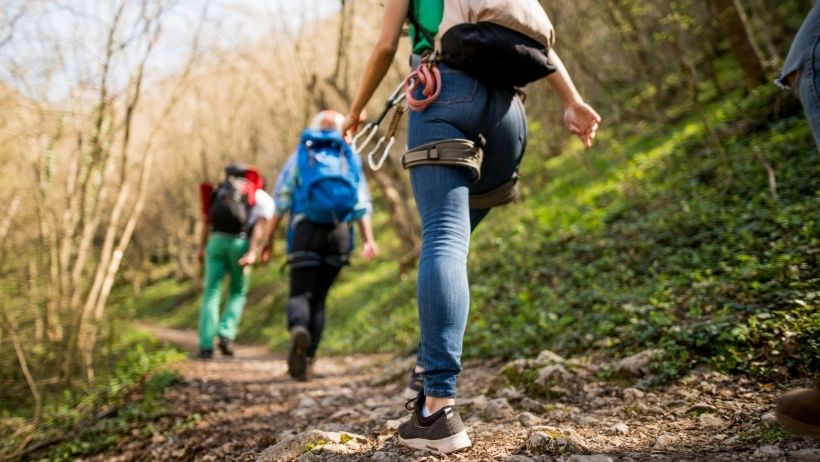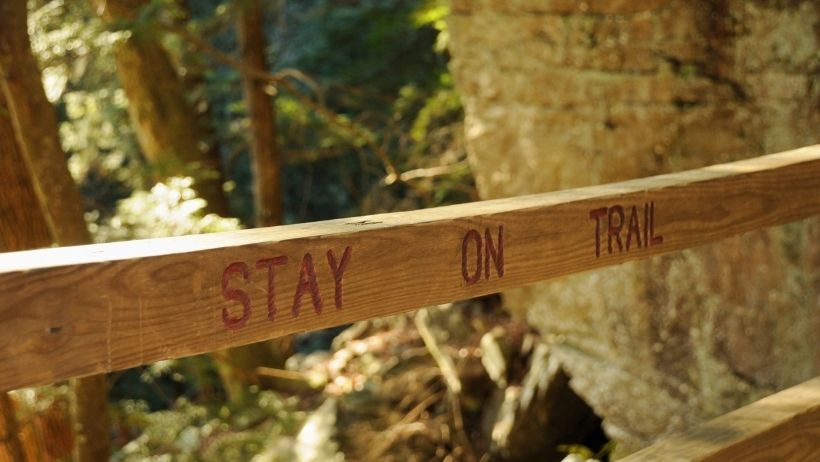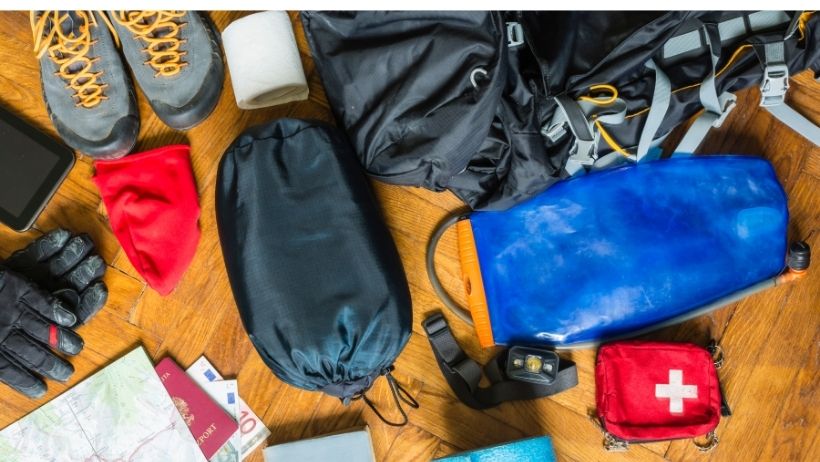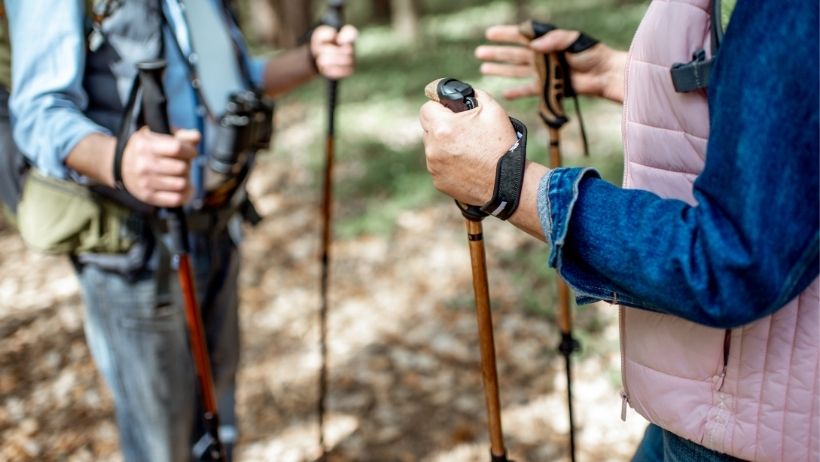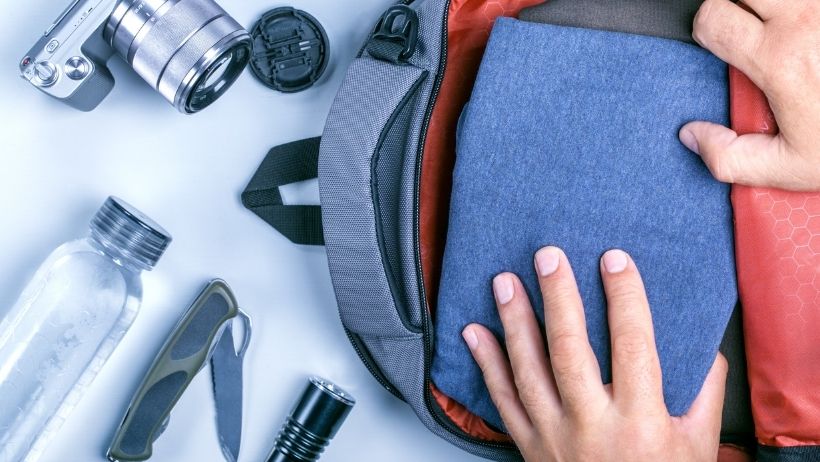Tips to staying safe on a Hiking Adventure
Are you planning to take your family, friends, or romantic partner on a hiking adventure soon? As you probably already know, hiking can be fun and exciting, but it can also be dangerous at the same time. Of course, there are several steps you can take to protect yourself on your next hiking adventure and a few of these measures are outlined below.
Tip #1: Choosing the hiking route
Regardless of whether it is a leisurely hike through meadows and forests or a real trekking adventure, your project always starts with planning the route: How many kilometers do I cover and what are the paths like? How long am I on the road in total, a few hours, several days, or even weeks?
You must find out about rest stops along the route in advance of your hike. So you can better assess your food. There are some good hiking apps on the market that make it easier for you to choose your route and show you the length and altitude as well as the level of difficulty. In addition to your smartphone, we recommend that you always pack a hiking map. After all, in the event of an empty battery, the app on your smartphone will no longer bring you home!
In addition, the selection of the hiking route should be adapted to your physical fitness and that of your group. If, for example, it is the first tour of the year, we recommend that you do not start with a high-alpine hike.
The following always applies here: Orientate yourself on the strength, experience, and endurance of the weakest link in the group.
Tip #2: Unwritten rules on the mountain
In addition to the rules laid down for a hike, such as the times when the hut is quiet or the requirements for eating food you have brought with you in a hut, there are some rules of conduct that you should observe during your hike.
Rules of conduct when hiking:
- take leftover food and packaging material with you
- stay on the marked trails
- do not break off any plants or even willfully destroy them
- do not listen to loud music and be quiet
- always let hikers who descend go first
Tip #3: Invest in suitable hiking boots
Tripping, falling, or slipping: it can quickly happen that you stand up for yourself or slip while hiking. The reasons for this are often poor footwear or the wrong assessment of the terrain. With the help of good hiking shoes, your foot will be relieved and your surefootedness will be improved.
We strongly recommend that you make sure that you have a good fit when choosing your hiking boots. The shoe shouldn’t pinch, nor should you feel uncomfortable while walking. In addition, the optimal hiking shoe has a low weight and a non-slip sole.
Tip #4: The basic equipment for your hike!
On your hike in easy terrain, the choice of clothing is not that relevant. The situation is different for hikes in steep terrain and multi-day tours. Here you should pay attention to functionality and an optimal fit. We generally recommend packing as little as possible for your hike and using light materials for clothing and equipment.
Still, you can’t avoid packing a few items in your backpack. The list below gives you an overview of the basic equipment for your next hike. Of course, different items belong in your backpack on a multi-day tour than on an easy day tour.
Basic hiking equipment:
- Backpack
- Hiking or mountain boots
- Rainwear
- Hiking sticks
- Headlamp
- First aid kit (complete) with a small bivouac sack
- sufficient drinking water and snacks
- Smartphone
Tip #5: Dress according to the onion principle
As already mentioned, we recommend that you equip yourself with functional clothing for your hike. After buying it, all you have to do is use the clothes optimally!
- The best way to do this is to use the so-called onion principle: The onion principle and the right functional clothing ensure that you stay dry and warm on your hike. As the name suggests, the onion principle is about combining several layers of clothing. Depending on the temperature and exertion, you decide which materials are comfortable for you.
How many locations you will use at what temperature and hike, we cannot tell you in general. Since your temperature perception differs from that of your hiking partner, it may well be that you are still running in your T-shirt while others are already putting on a fleece jacket.
It’s best to try out for yourself what is comfortable for you. We can also tell you that at the beginning of your tour you prefer to dress less and even freeze easily. If you’re warm at the start, you’re wearing too much! And don’t worry, after a few meters you will be warm!
Tip #6: Use hiking sticks
In addition to hiking boots and clothing, good hiking sticks are part of the basic equipment for every hike! Especially on steep terrain or on tours with a lot of luggage, you can use hiking sticks to reduce the pressure on the joints and muscles. In addition, the sticks help you to keep your balance in rough terrain and save your strength. Practically, you can easily adjust the hiking poles to the right length using the locking system. Uphill, you should shorten the length of the pole depending on the steepness of the slope. If the sticks are in your way in rocky terrain, you can easily attach them to the outside of your backpack.
Tip #7: Take enough breaks and walk slowly at first
However, having the right equipment is no guarantee that you won’t buckle and injure yourself while hiking. Your surefootedness will be enormously impaired, especially if the speed is too high or if you are tired. Therefore, always pay attention to regular breaks during your hike and always start your tour at a moderate pace. Only after about 30 minutes are your muscles warm and the risk of injury reduced!
Tip #8: Pack your hiking backpack properly
Which things belong in the backpack on your hike depends on the type of hike. For example, if it is a day hike, you need less equipment than a multi-day tour. It is the same with hikes in flat terrain and high alpine tours.
Basically: A trained hiker can carry around 20 to 25 percent of his body weight over a longer time. In any case, avoid unnecessary weight! As a rough guide, you can weigh your backpack once. For a multi-day tour, for example, the scales should not show more than 12 kilograms.
Rules of thumb for packing your hiking backpack:
- pack heavy equipment down and close to your body
- Medium weight pieces of equipment come up and out
- Light equipment belongs either in the bottom compartment or right at the top
- stow away little things in the lid compartment
Always try to attach as little equipment as possible to the outside of the backpack – an exception is of course your drinking bottle!
Extra tip: Use packing cubes to bring order to your hiking backpack and, above all, to keep it!
Tip #9: This is how you set up your hiking backpack and wear it correctly
After you have packed your backpack for a tour, you have to adjust it to suit you. According to the rule: the weight is carried on the hips and not on your back, you should take a closer look at your backpack. Your hips will later support approx. 75% of the weight, while your shoulders will support the remaining 25%. Therefore, the optimal setting of the backpack is particularly important!
First open the shoulder, hip, and chest straps as well as the position adjustment straps and bend forward slightly, now you can adjust your hiking backpack correctly.
This is how you adjust your fully packed backpack precisely:
- place the hip belt exactly in the middle of your hip bones
- close the buckle and pull it comfortably tight
- tighten the shoulder straps (shoulder pads should nestle against the shoulder)
- adjust the carrying height of the shoulder straps until it fits you
- With the help of the position adjustment straps, you will find the optimal positioning of your backpack
- close the chest strap
Extra tip: It’s best to get a second person to help you adjust your hiking backpack, it often works better and faster. We also recommend loosening the shoulder strap straps during your tour to take the strain off your shoulders. The same goes for your hip belt too! Just give it a try: Your muscles will thank you!
Tip #10: Always keep an eye on the weather
You should always keep an eye on the weather on every hike. Check the weather conditions for the relevant period in advance.
It is also important to keep checking the weather app and the sky during your hike. Weather changes quickly, especially in the mountains! While there is still sunshine for a moment, a rain front can build up in front of you within a few minutes. Depending on the extent to which the weather change affects your safe progress, you have to weigh up whether you should interrupt your tour or perhaps even break it off completely. The following always applies here: turning back on the mountain is by no means a defeat!
In addition to rain, fog, and sunshine, you should also take into account the prevailing conditions on the mountain. Some peaks are not freely accessible at all times of the year. It can well happen that one or the other peak is covered by snow until May. So if you are planning hikes and overnight stays for spring, you should inform yourself about the conditions on-site shortly before you start.
Should you still have to set up an emergency camp overnight, you should always bring a bivouac sack in your backpack. This is similar to a normal sleeping bag and is also equipped with a few extras. The point of a bivouac sack is to give you protection from wind and rain in emergencies. In addition, the sack ensures that it does not get clammy inside.
Tip #11: This is how you find food on your hike
Eating and drinking enough is essential to maintain your concentration and productivity while hiking. Inquire in advance whether there are huts and water sources to be found along your planned tour. To do this, we advise you not only to research on a map but also online, because not all huts are open all year round.
If there are no rest stops on your route, you should plan accordingly more weight for eating and drinking. As a rule of thumb, you can count on 2-3 liters of water per person per day. If you cross water sources on your route, you can pack less water. In addition to enough fluids, nuts, dried fruit, and muesli bars always belong in your backpack. After all, you never know whether you will spontaneously change your route or whether the selected hut has closed unexpectedly.
Tip #12: Rules of conduct in the event of a thunderstorm on the mountain
As already mentioned, in the mountains there is often a sudden and unexpected change in weather. If a thunderstorm is already announced for the day of your hike, you should think twice about whether you want to start the tour. In such a case, we recommend postponing the hike to a later date.
If you are already in the mountains and you are unexpectedly surprised by a storm, you should follow a few rules. At best, you are near a (protective) hut. Unfortunately, it may well be that you are far from a shelter. In this case, we will give you a few tips on how to behave in an emergency during a thunderstorm in the mountains.
How to behave properly during a thunderstorm in the mountains:
- leave exposed areas
- only seek refuge in caves if there is a half-length of the body from the entrance and the ceiling
- avoid free-standing trees
- seek protection in hollows or less exposed terrain
- take a squatting, huddled position on an insulating surface (e.g. backpack) and keep both feet next to each other
- remove metal objects like glasses, knives, etc. from your body
- The best protection is provided by huts or, if necessary, a bivouac
Also, try to be calm and not lose your nerve. Then stay in your shelter until the thunderstorm has passed.
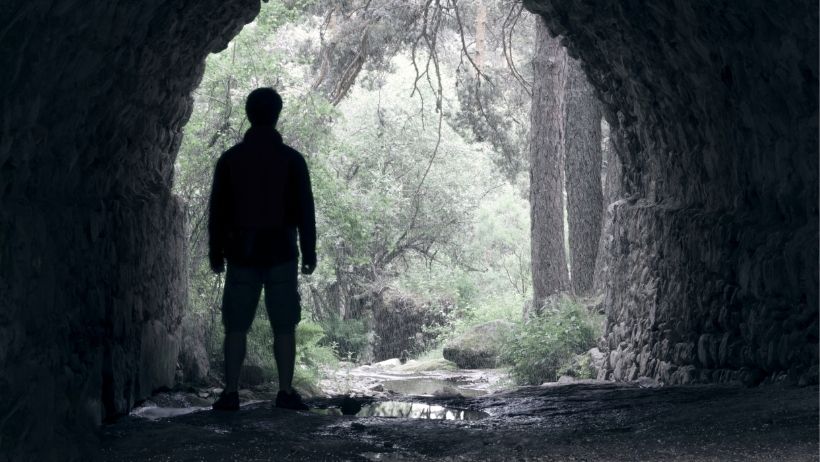 Tip #13: What to do if there is a mountain problem
Tip #13: What to do if there is a mountain problem
We do not hope that you will get into mountain difficulties, but if there is an emergency, some tips are extremely helpful. An emergency on the mountain does not differ from the procedure in the valley: In the first step, you should always provide first aid! Once you have done this, the second step should be to alert the emergency number on 911 or 112.
This information is important for rescuers:
- Where exactly did the accident happen?
- What happened
- How and when did the accident happen?
- What kind of injury and how many injuries are there?
- Who reports the accident and what callback options are there?
- How accessible is my location (landing facilities for helicopters)?
Even if you find yourself in an exceptional situation, you must remain calm and under no circumstances leave the injured person alone until the helpers arrive. At best, you approve of the person.
Hiking is no walk in the park, but it is the best way to discover the world!
Every hike also involves a few dangers, but with the right preparation and our hiking tips, you can minimize the risk. When choosing the hiking route, make sure that it suits you and your hiking partners and invest in good equipment!
In addition to sturdy hiking boots and good walking sticks, a suitable and properly packed hiking backpack is also important. In addition, stick to the rules and always find out about the current weather conditions, and nothing stands in the way of your hiking happiness!
